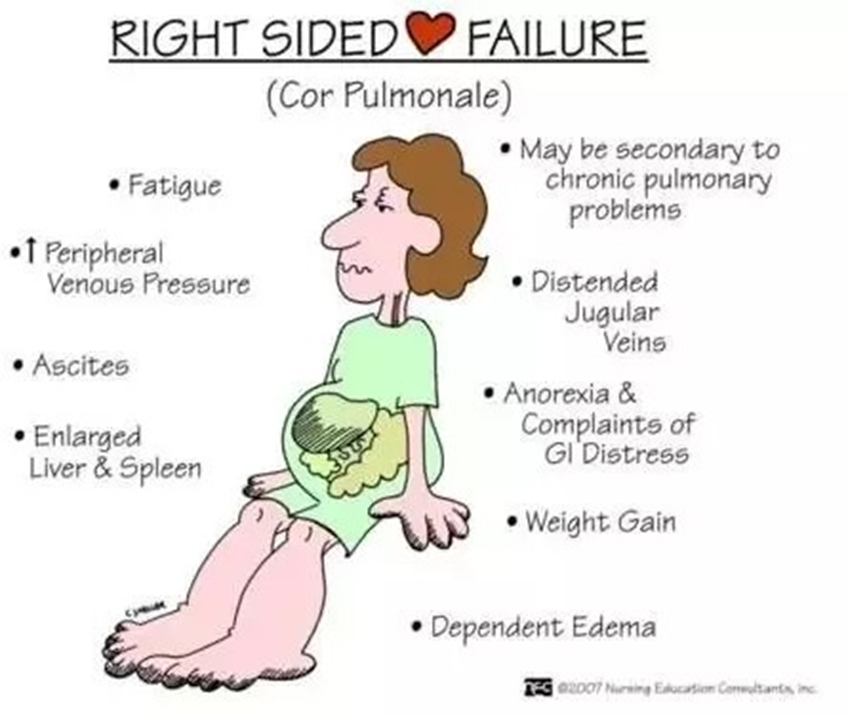A client is admitted to the telemetry unit with an episode of substernal chest pain.
His diagnostic studies reveal an elevated ST segment on the electrocardiogram (ECG) and an elevated cardiac troponin level.
What would be an appropriate initial nursing goal?
Reduce anxiety and relieve pain.
Improve myocardial oxygenation and reduce cardiac workload.
Eliminate family stressors and provide a calm environment.
Start the client on a low-sodium diet and decrease fluid intake.
The Correct Answer is B
Choice A rationale
While reducing anxiety and relieving pain are important aspects of care, they are not the primary goal for a client with an elevated ST segment on the ECG and an elevated cardiac troponin level. These findings indicate myocardial injury, which requires interventions to improve myocardial oxygenation and reduce cardiac workload.
Choice B rationale
The primary goal for a client with an elevated ST segment on the ECG and an elevated cardiac troponin level is to improve myocardial oxygenation and reduce cardiac workload. This can be achieved through medications, oxygen therapy, and bed rest.
Choice C rationale
Eliminating family stressors and providing a calm environment can contribute to reducing anxiety and promoting relaxation, but it is not the primary goal in this situation.
Choice D rationale
Starting the client on a low-sodium diet and decreasing fluid intake are interventions for managing heart failure, not for an acute myocardial injury.
Nursing Test Bank
Naxlex Comprehensive Predictor Exams
Related Questions
Correct Answer is D
Explanation
Choice A rationale
High-output heart failure is not typically associated with chronic pulmonary disease and elevated pulmonary vascular resistance. High-output heart failure occurs when the heart is unable to meet the body’s increased demand for blood flow, which is not the case in this scenario.
Choice B rationale
Low-output heart failure is also not typically associated with chronic pulmonary disease and elevated pulmonary vascular resistance. Low-output heart failure occurs when the heart is unable to pump enough blood to meet the body’s needs, which is not the case in this scenario.
Choice C rationale
Left heart failure is not typically associated with chronic pulmonary disease and elevated pulmonary vascular resistance. Left heart failure occurs when the left side of the heart is unable to pump enough blood to the body, which is not the case in this scenario.
Choice D rationale
Right heart failure is the correct answer. In the context of a 65-year-old male patient diagnosed with chronic pulmonary disease and elevated pulmonary vascular resistance, the nurse should assess for right heart failure. This is because the right side of the heart pumps blood to the lungs, and if the pulmonary vascular resistance is elevated, it can put strain on the right side of the heart, leading to right heart failure.

Correct Answer is A
Explanation
Choice A rationale
A 59-year-old patient with unstable angina who has just returned from a percutaneous coronary intervention (PCI) should be prioritized for assessment. PCI is a procedure to open blocked or narrowed coronary arteries and can lead to complications such as re-occlusion of the artery or bleeding from the catheter insertion site. Furthermore, unstable angina is a condition that can progress to myocardial infarction if not managed effectively.
Choice B rationale
A 56-year-old patient with variant angina due to receive nifedipine (Procardia) requires monitoring, but is not the highest priority. Variant angina is a form of angina that occurs at rest, often with severe pain, but it is usually well-controlled with medications like nifedipine.
Choice C rationale
A 65-year-old patient who had a myocardial infarction (MI) 4 days ago and is anxious about discharge planned for today is a lower priority for assessment. While it’s important to address the patient’s anxiety and provide education about post-discharge care, this patient is not in immediate danger.
Choice D rationale
A 39-year-old patient with pericarditis complaining of sharp, stabbing chest pain requires assessment, but is not the highest priority. Pericarditis is inflammation of the pericardium, the sac-like covering of the heart, and while it can cause severe pain, it is not typically life- threatening.
Whether you are a student looking to ace your exams or a practicing nurse seeking to enhance your expertise , our nursing education contents will empower you with the confidence and competence to make a difference in the lives of patients and become a respected leader in the healthcare field.
Visit Naxlex, invest in your future and unlock endless possibilities with our unparalleled nursing education contents today
Report Wrong Answer on the Current Question
Do you disagree with the answer? If yes, what is your expected answer? Explain.
Kindly be descriptive with the issue you are facing.
